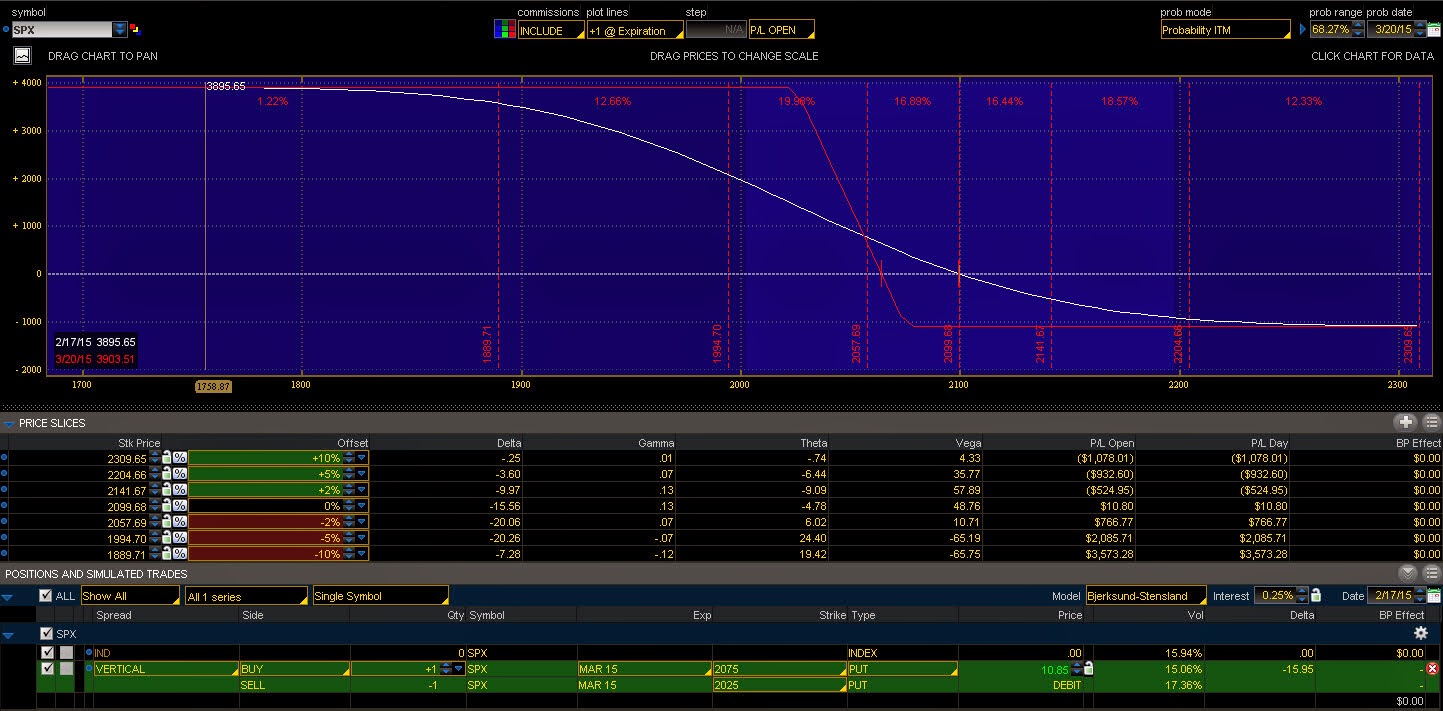I hope everybody is having as good a weekend as I am. I've been super busy during the work week, but I have still been able to get a few trades going in a couple of diversified strategies. I have been trading a mix of debit spreads, short puts, credit spreads and one trade that I will detail below, the Double Diagonal. I had honestly intended for this post to be more timely, but work is work, life is life. I'm in Guam, and I work during the day, so the market opens at 2300 and closes at 0600. Gotta get my beauty sleep.
Anyway, Here's the chart of GOOGL as of 20 March 2015, showing the upper and lower break even points for the Double Diagonal placed as described later in the article.
And here's how I put together the trade:
My April '15/May '15 615/635c525/505p Double Diagonal was placed on 6 March 2015 for a $.75 credit. My normal target for a trade like this would be 10% on the capital at risk, or $200 per 1 contract on the trade as placed above. However, I currently have a limit order to close the trade at $2.25 net credit, or 7.5% on risk capital or $150 per 1 contract. I'm taking less than normal in an effort to exit the trade as soon as possible.
My last 2 Diagonals, one in RUT and one in PCLN were closed for 10% gain on capital after about 25 days and much sweat. I would love to be in GOOGL for less than 20 days just to increase my probability of profit.
Here's the trade as it sits now:
The trade sitting at about $110 per contract profit now. I expect by the end of this coming week to be able to close for my 7.5% on risk target. The current Theta is $9, so if volatility does not decrease by more than 1%, I should be out on Thursday. If the implied volatility in GOOGL increases it will be sooner as the Vega is $15.
Ok, how did I come upon this trade you might ask? I use these Double Diagonals on names that I would normally trade for a volatility crush on earnings with an Iron Condor. Implied volatility has a tendency to ramp in these names in the month prior to earnings as actual volatility decreases, as the stock will sometimes move less in anticipation of the coming earnings announcement.
So, since the Double Diagonal is a long Vega, or in other words a trade that benefits from an increase in implied volatility, I wait until about 5 or 6 weeks prior to earnings, and set the short strikes about 45 days out, with the long strikes on the next monthly cycle after the month in which the short strikes are placed.
The best range of implied volatility to put this trade on is between 20-25%. If the security that you choose is much lower than that, the short strikes will be too close together and your probability of profit will fall through the floor. The idea is to trap price action in between your short strikes as implied volatility ramps up though 30% while movement on the tape slows or virtually stops as the earnings announcement approaches.
One more thing. It does not matter whether the Double Diagonal is placed as a debit or a credit. The only thing that matters is that the profile of the trade looks as it does in the example above. Your max profit line at expiration must not drop below the zero line. Your short strikes should be close to 1 standard deviation in the short strike month.
I have successfully placed these trades in CMG, PCLN and GOOG (before the split). I have not had the time, but I am interested in backtesting the strategy on FB, TWTR and TSLA as they have very similar volatility profiles surrounding earnings and during the period in between.
Check out the Small Time Trader Facebook for the latest from those who have most influenced my trading.
If you have any questions, place them in the comments below, so everybody can see the exchange.
Good Luck trading in the next week and beyond!
STT


















